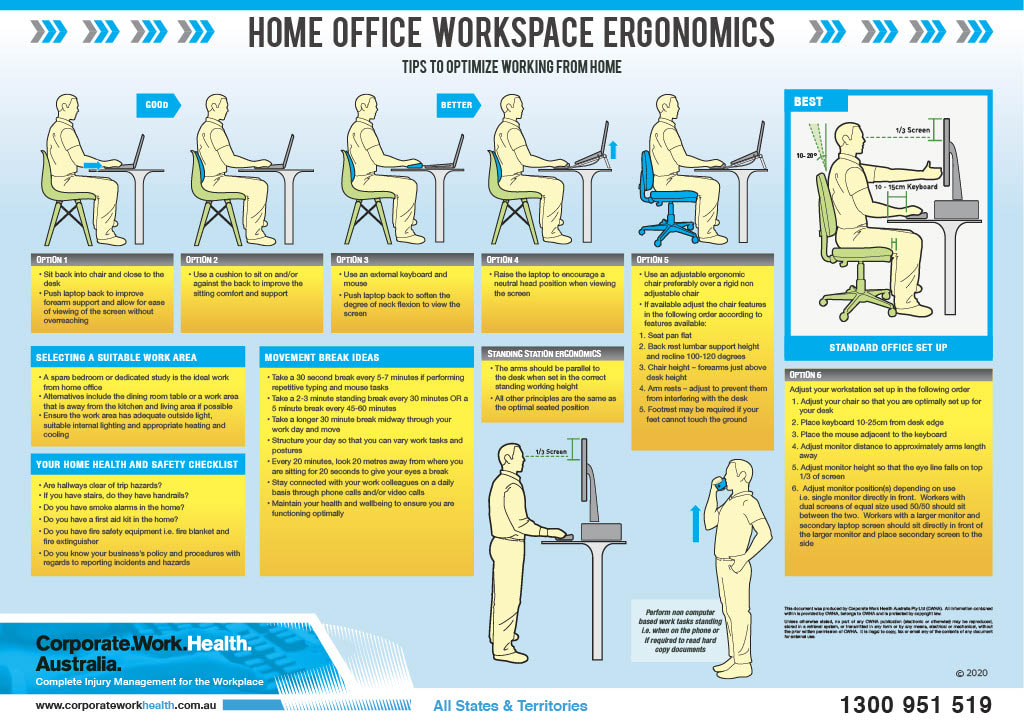|
In Australia at any one time, 25% of the population report low back pain and 20% report neck pain. A large proportion of people are working in front of a computer– even those “active” tradies. Combine this with many more working from home, it’s no wonder that we are treating a large proportion of people with headaches and back and neck pain – often associated with increased sitting. Our bodies are not designed to sit and be static for long periods, but many peoples work demands (and Netflix addiction) means we are sitting more. This is a list of things you can do to help you cope with too much sitting. Remember the main thing is our bodies like movement, regardless of how good our desk set-up is.
Some Extra Tips: a) Eyes - Look 20 metres away for 20 seconds every 20 minutes (20,20,20 rule). b) MOVE – get up and move every hour for 5-10 minutes and have a minimum 30minute break at lunch time c) Try to go for a 30 minute walk every work day - your body and brain will love you for it. Sally APA Musculoskeletal Physiotherapist Director, Tablelands Sports & Spinal Physiotherapy ☎️ 6352 3131 ✉️ [email protected] ℹ️ www.tablelandsphysio.com.au
0 Comments
Stiff neck from sitting at your desk? Here are some simple tips to relieve soreness and stiffness from being stuck in one position for a long time.
|
Copyright © 2024 All Rights Reserved - TABLELANDS SPORTS & SPINAL PHYSIOTHERAPY
177 Mort Street Lithgow NSW 2790 : Tel: 02 6352 3131 : i[email protected]
Click here to view our Privacy Statement | Click here to take our Customer Satisfaction Survey | Click here to read our Complaints Procedure | Click here to view our Terms & Conditions
177 Mort Street Lithgow NSW 2790 : Tel: 02 6352 3131 : i[email protected]
Click here to view our Privacy Statement | Click here to take our Customer Satisfaction Survey | Click here to read our Complaints Procedure | Click here to view our Terms & Conditions

